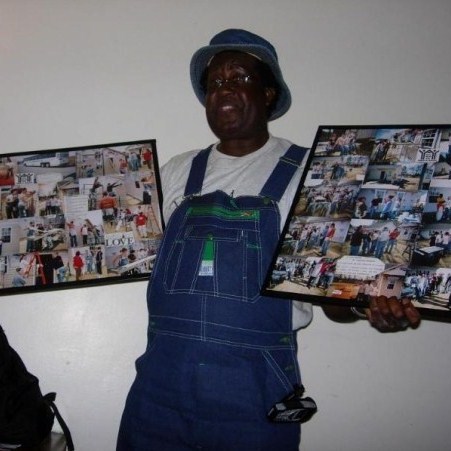
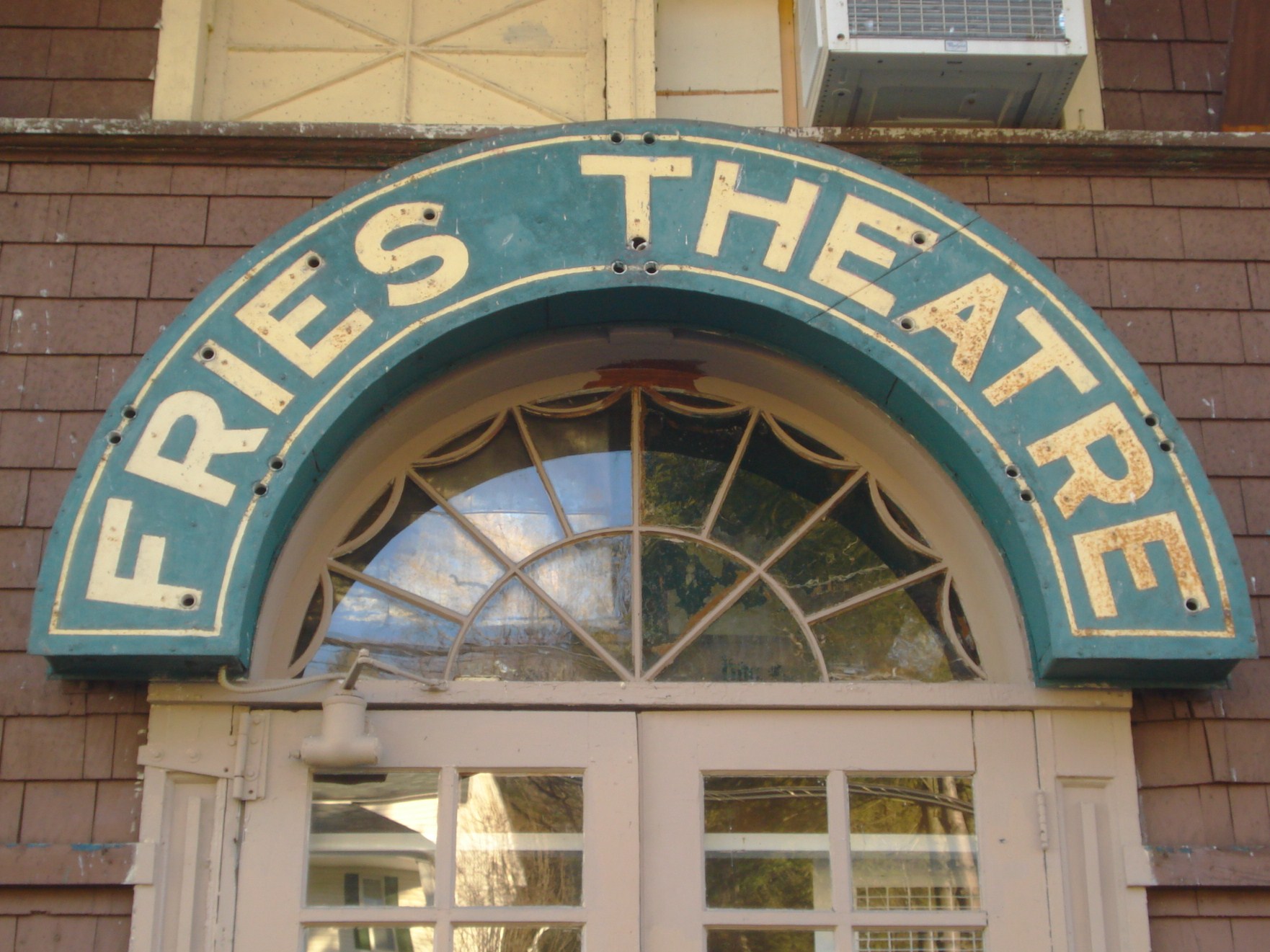
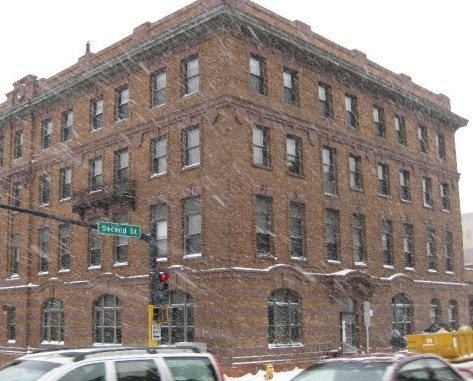
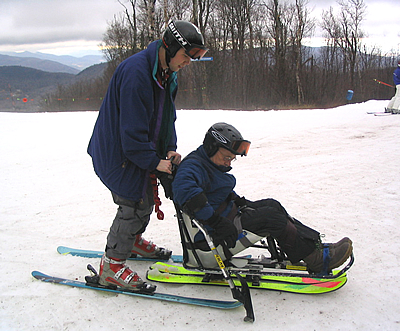
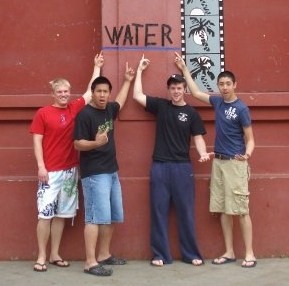
| Disaster Relief-Galveston, TX | ||||
| Habitat for Humanity-Rocky Mount, NC | Rural Culture-Fries, VA | Affordable Housing-Duluth, MN | Sport & Recreation-Boyne City, MI | Disaster Relief-Galveston, TX |
 |  |  |  |  |
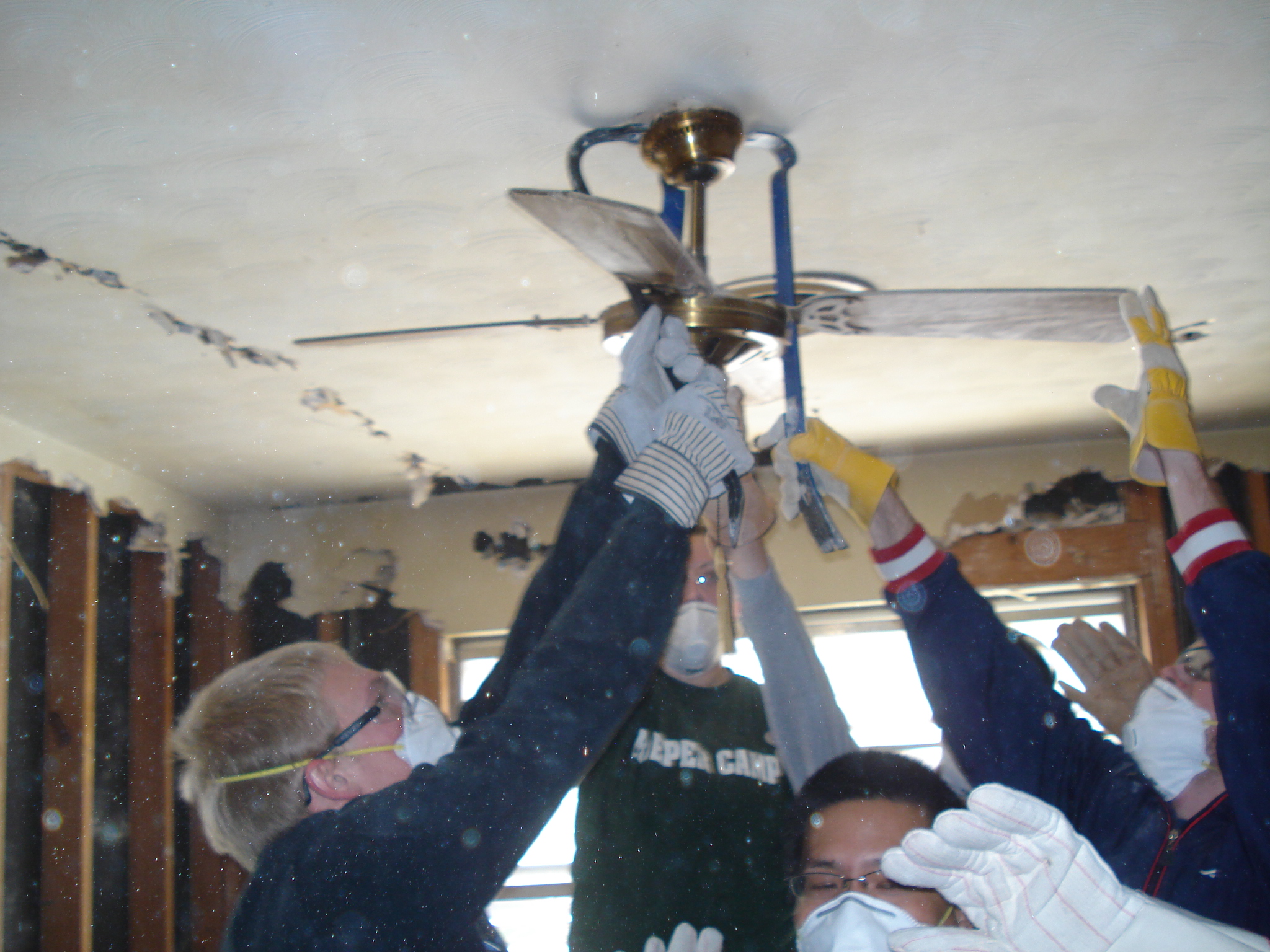 Gutting the house |
In March, 2009 I helped lead 9 other people to Galveston, Texas to stay in an elementary school and help individuals whose lives had been greatly devastated by Hurricane Ike. We worked with an organization called Community Collaborations that organizes volunteer groups all over the country to help in different disaster relief efforts. While we were there a group from AmeriCorps was also stationed there, they split their group and paired their members with the different college groups that were there. We got to work with two of the individuals; they gave us our projects for the days we were there. They made my interest in AmeriCorps even greater and I am considering joining for a year after I graduate from college. The first day we were down there we went to a home that had been flooded and ruined by the hurricane. We helped gut the house and took out all of the drywall, insulation, floors, and helped clean up all of the stuff in the backyard. We had a contest to see who could knock out the biggest piece of drywall. We also found a lot of really cool stuff in the backyard that we played with for a while during our lunch break. On the second day we went to a peninsula off of Galveston Island called Bolivar. We took the ferry over to the peninsula and went over to a place called Fort Travis. We helped clean up their fence and put it back up so it was in working order, and we also dug holes and put up new poles and garbage cans so that cars didn’t have access to the beach area. While we were there we were given a tour of the entire property area and we learned that 97% of the structures on the island were either completely gone or damaged beyond repair. Pam, who was the lady that we were working with, told us that she and 20 other people were going to wait the hurricane out in one of the forts on the peninsula. They parked their cars on the backside of it and went inside to wait it out, they could see the swells coming up and she said they were 100 feet tall. The coastguard flew in helicopters to get them out and all but four people decided to leave. Of the four that tried to wait it out three died. The only cars that survived on the entire island were the four cars that they had parked behind that fort. It was really eye opening to drive around on the peninsula almost six months after the hurricane hit and see all of the stilts that the homes used to be on and all of the damage that it caused to the area. It really made me appreciate what I have and allowed me to see what these people were going through. It also showed me how long it takes to rebuild an area after something like that. On the third day our group split up, I led half of our group to a food bank and Casey, my co-siteleader, led the other half of the group to a house. My group helped put together food boxes, check people in, give people food and helped clean and pick up garbage in the surrounding area. Casey’s group went to an older man’s home and helped him pick up all of the things that had landed in his backyard during the storm. That night the mayor of Galveston Island came and talked to us about the storm and what had happened. I learned that most of the damage on Galveston was due to flooding, and that the seawall had done its job on the side that was facing the ocean, but the water went around the canal in the back and flooded the island from behind. Everyone that lived on the island was transported to a single hotel and stayed on the top floors of the building. They watched as the storm attacked their homes and community, when it was finally safe they ventured out to see what kind of damage had been done to their homes. Most of the damage could have been easily fixed initially but the power and sewer systems were flooded and they made everyone evacuate the island to Houston. They were able to return two or three weeks later and by then the flooding and water damage in their homes and ruined almost everything. On the fourth day we went to a home and scraped lead based paint off of the house that was chipping away so that it wouldn’t be out in the environment. This was a very tedious job and it was not easy to scrape the paint off of the house, but it had to be done so they could repaint. On the fifth day we went to a man’s home and helped paint the interior, half of us left for the second half of the day to go to a food fair over at the food bank we had worked at earlier that week. They had a huge shipment of food come in and we sorted it and gave it to families. The other half of the group stayed and helped move furniture into another home that the man owned and then we met up with them at the end of the day to finish up there. | 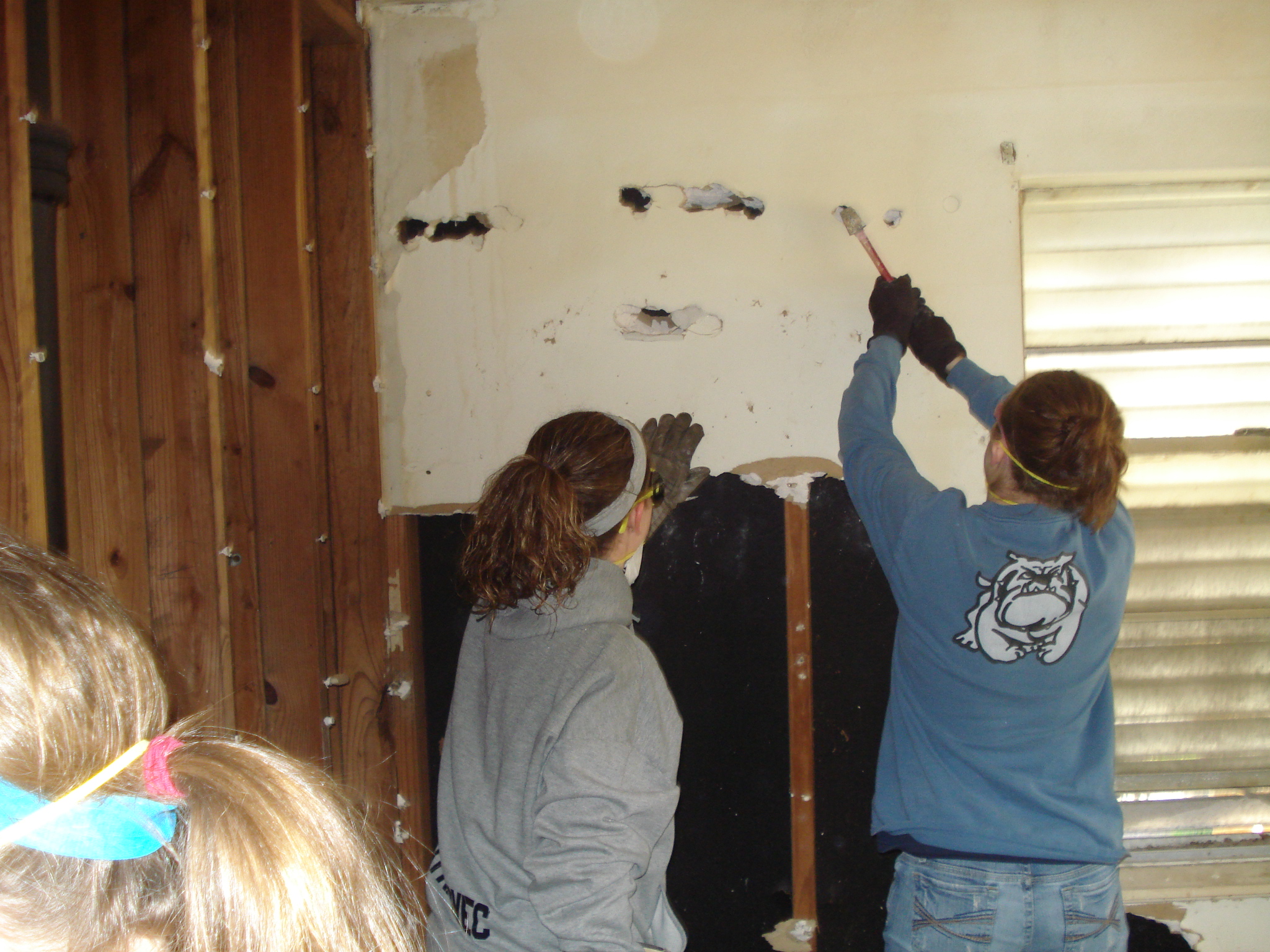 Ripping out drywall |
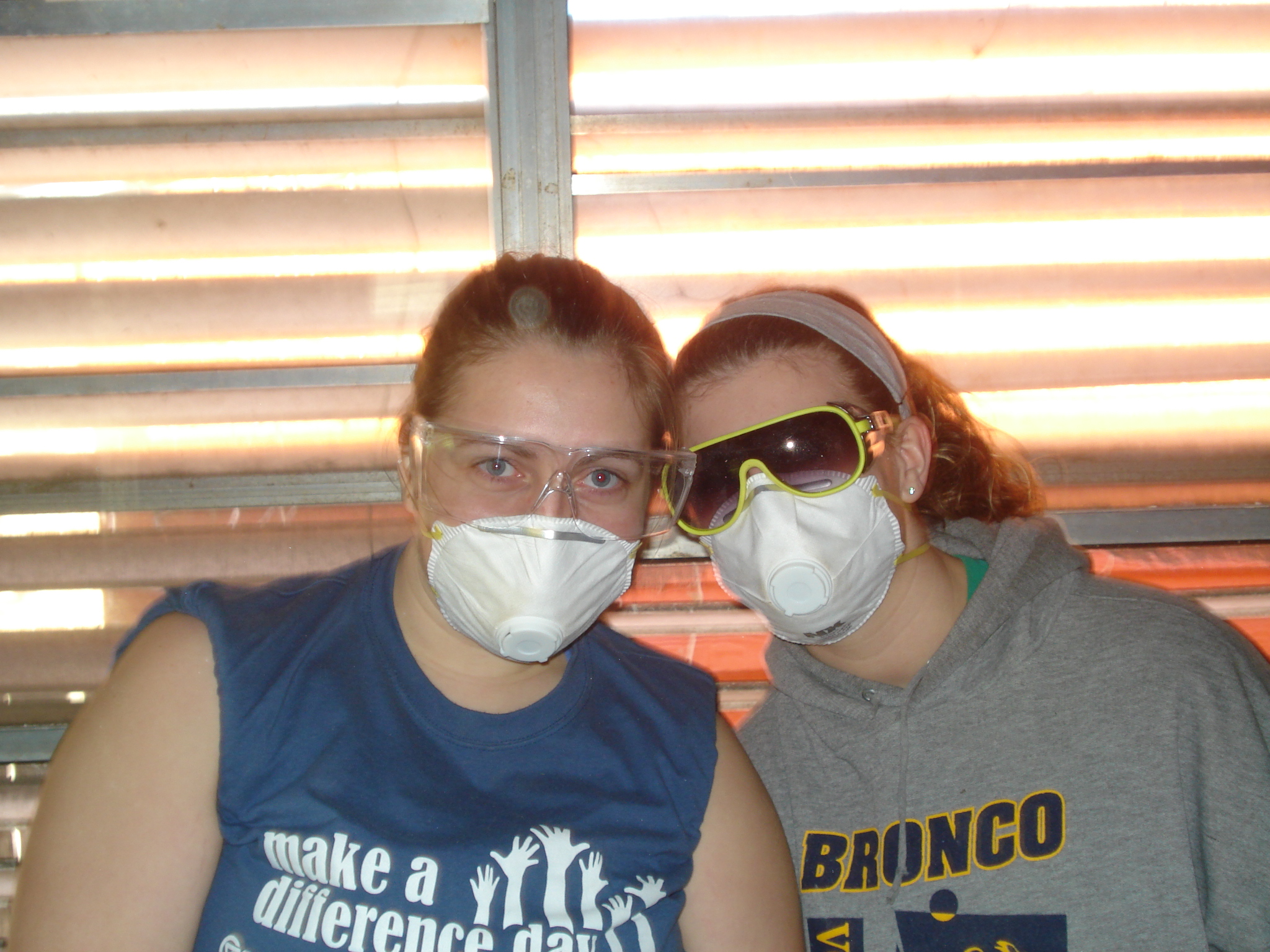 Co-siteleader picture while gutting the house | 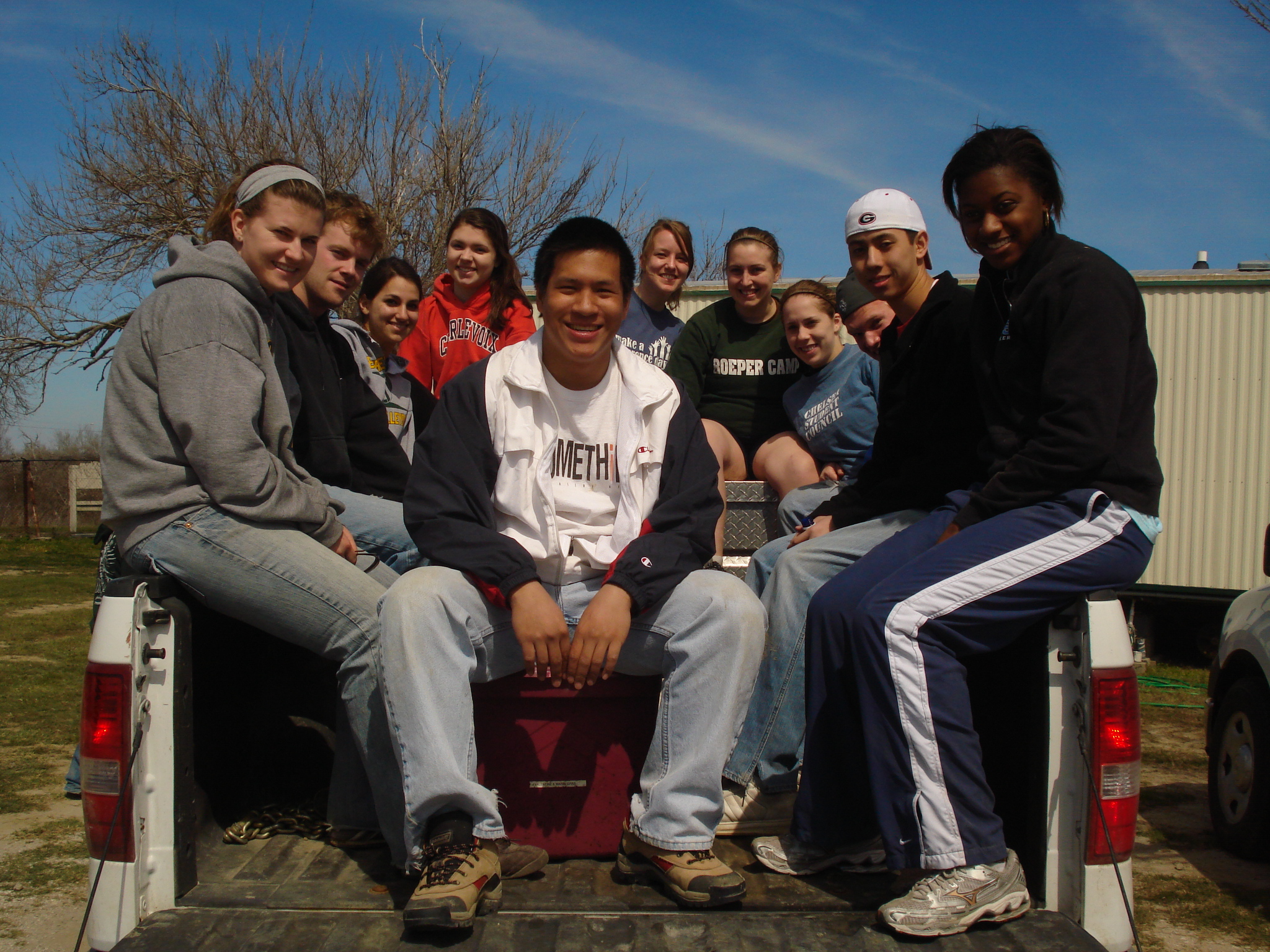 Group picture while waiting for our tour of Fort Travis | |
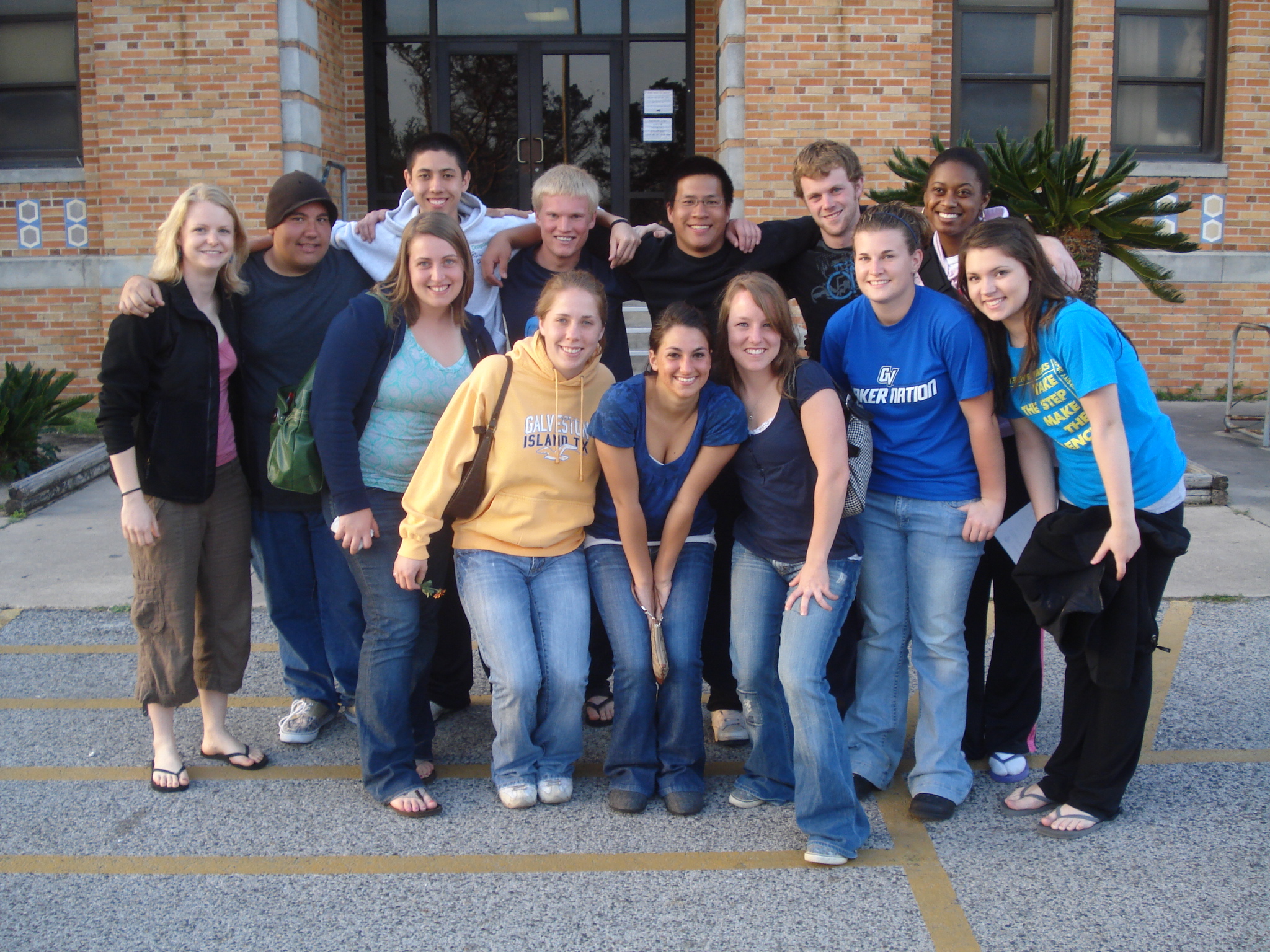 Group picture with our AmeriCorps leaders | 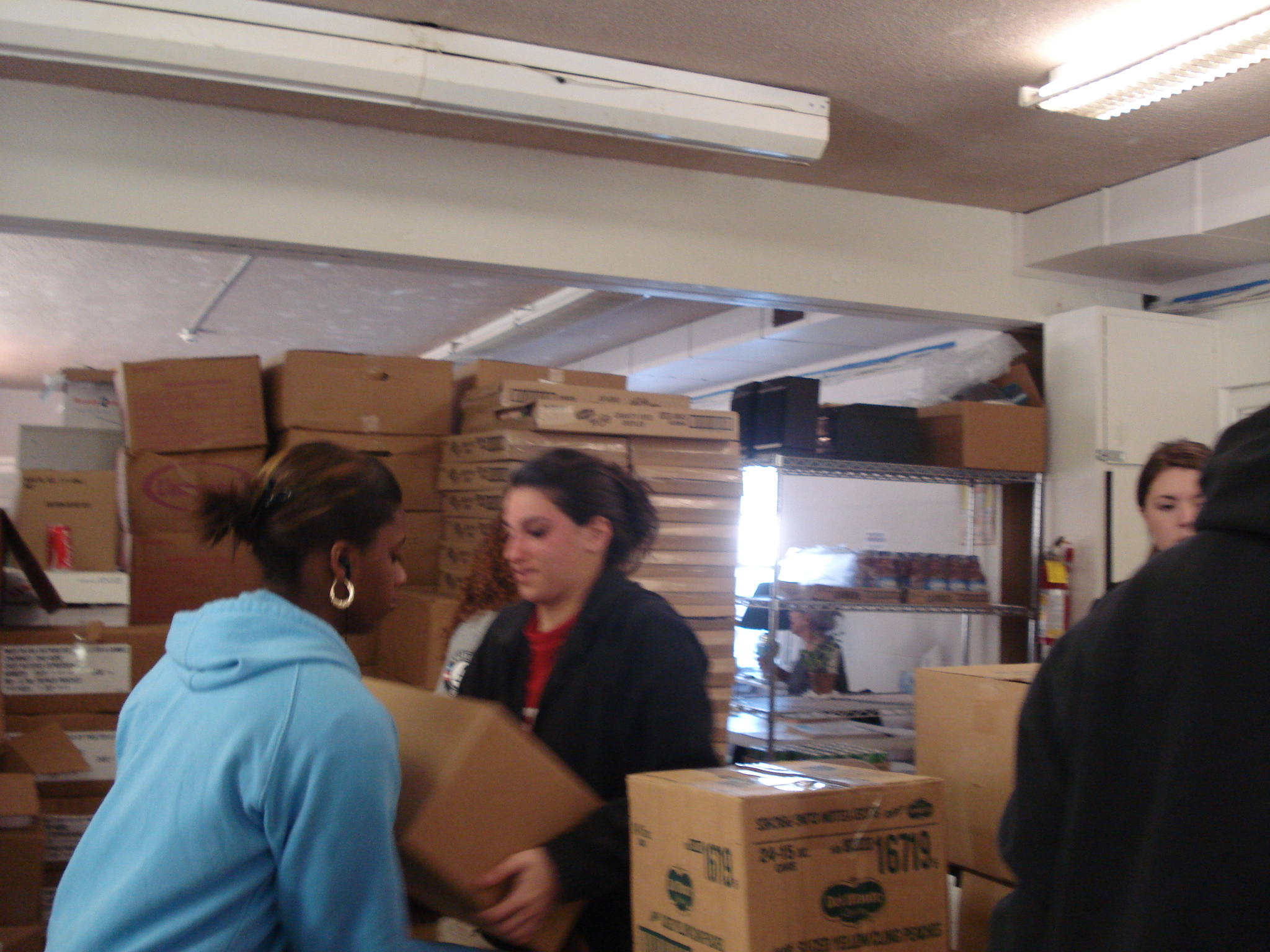 Working at the food bank | |
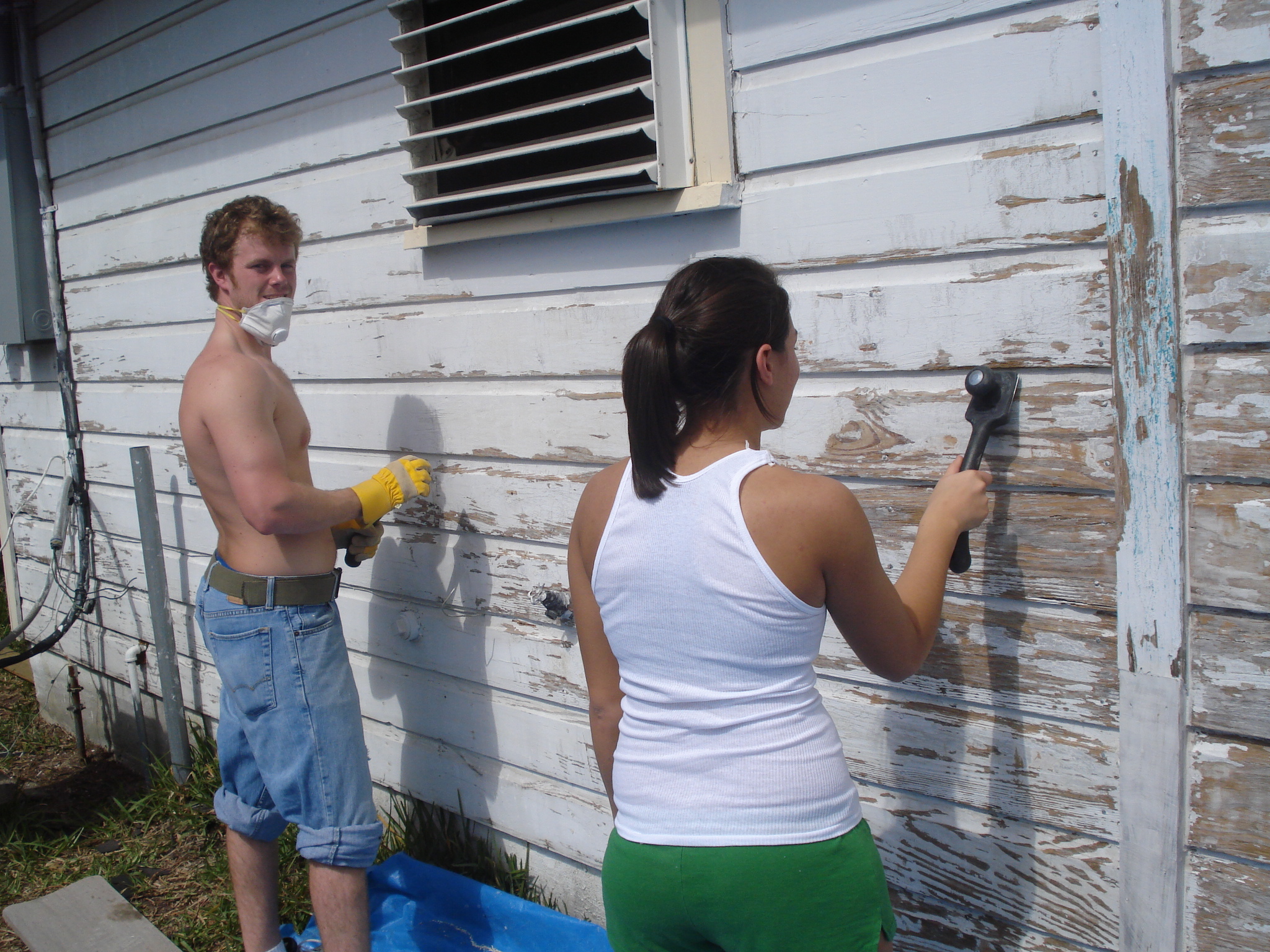 Scraping lead paint off of a house | 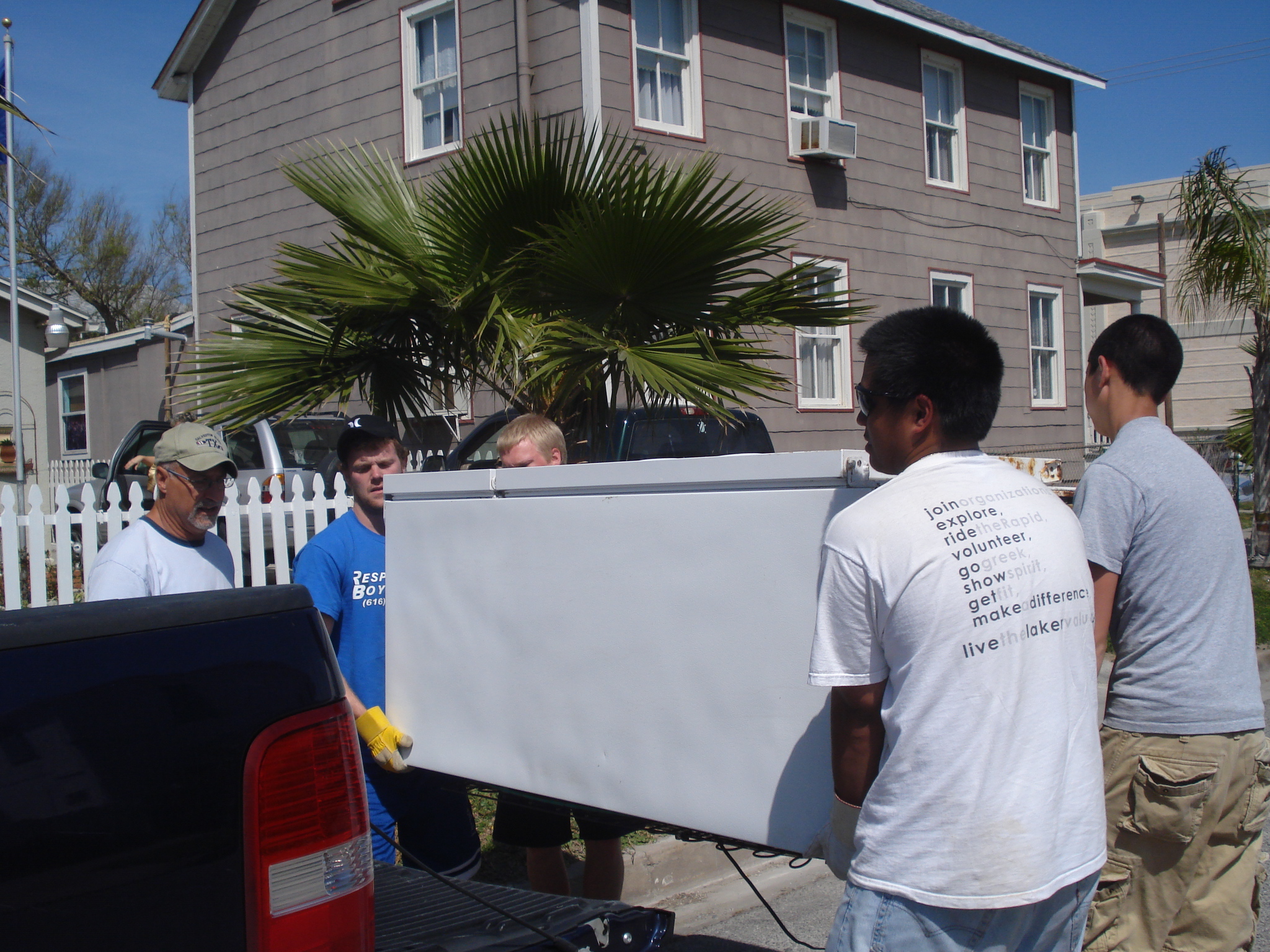 Moving a refridgerator into a house |
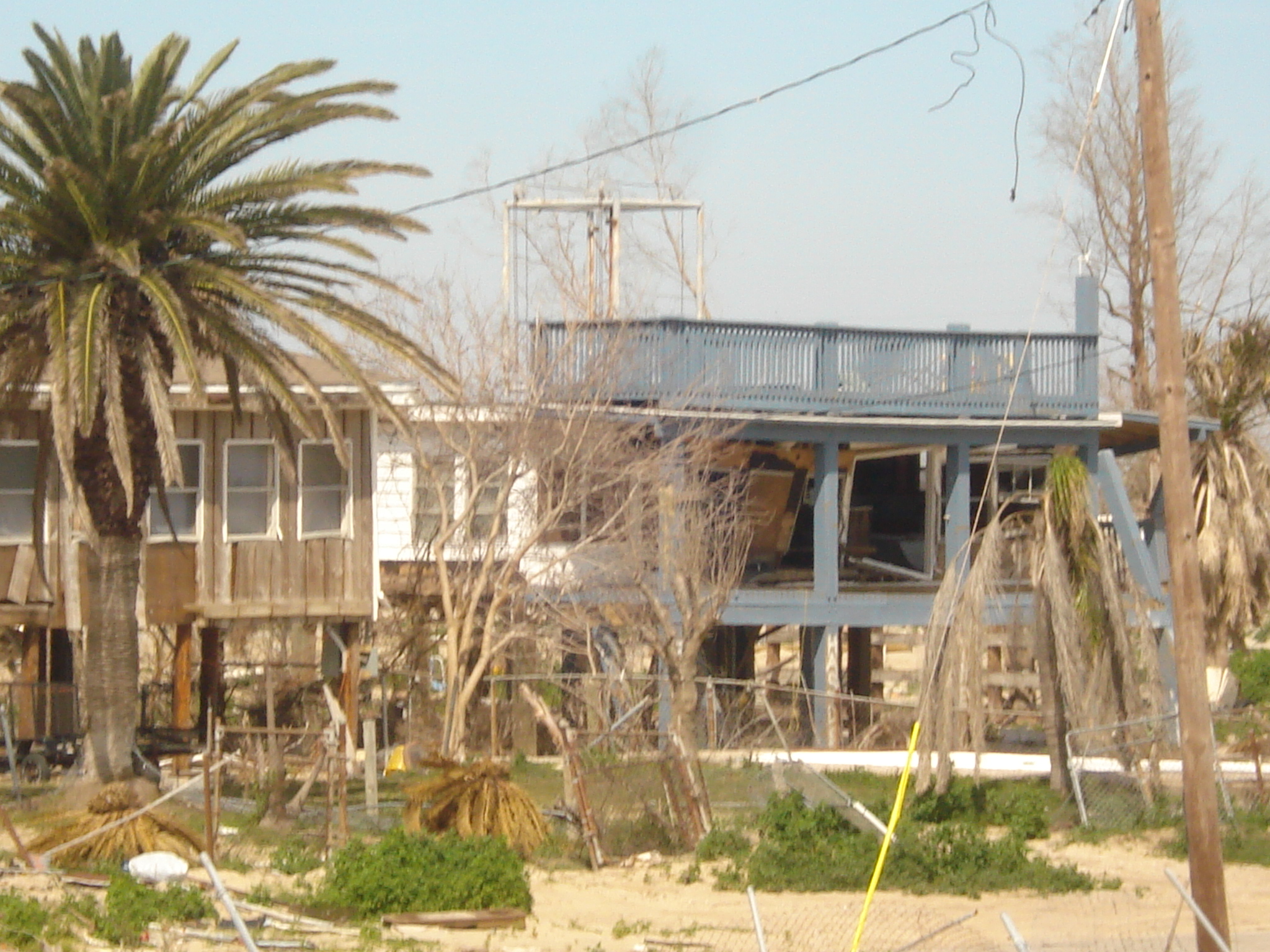 House damaged by Hurricane Ike | 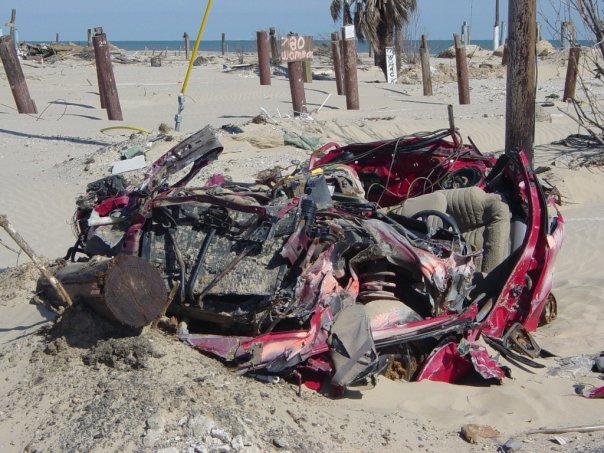 Car ruined by Hurricane Ike | 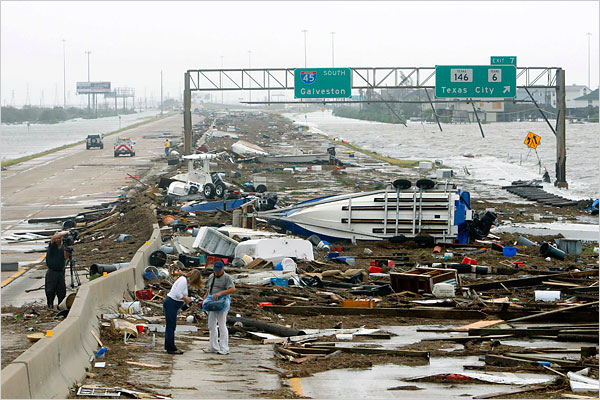 Damage on the only expressway to Galveston |
 | 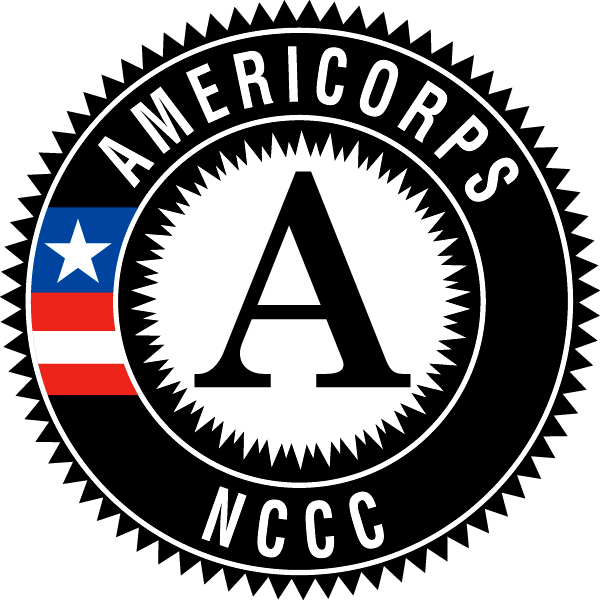 |
| Habitat for Humanity-Rocky Mount, NC | Rural Culture-Fries, VA | Affordable Housing-Duluth, MN | Sport & Recreation-Boyne City, MI | Disaster Relief-Galveston, TX |
| Home | Top of Page |